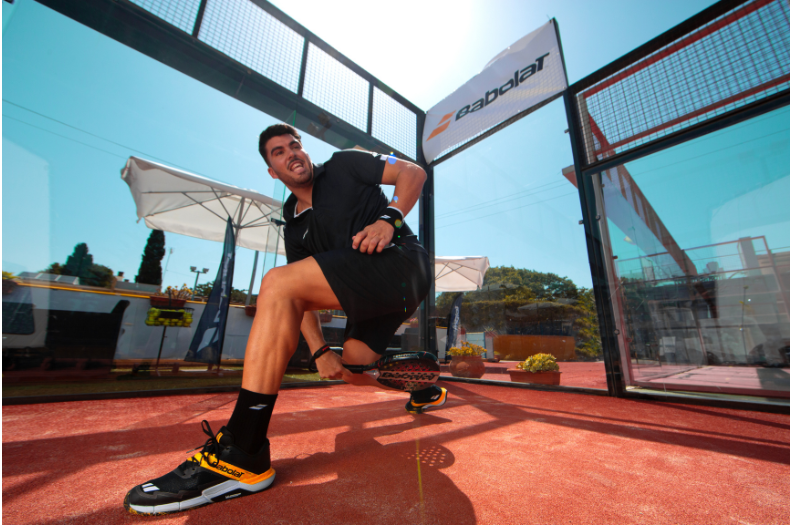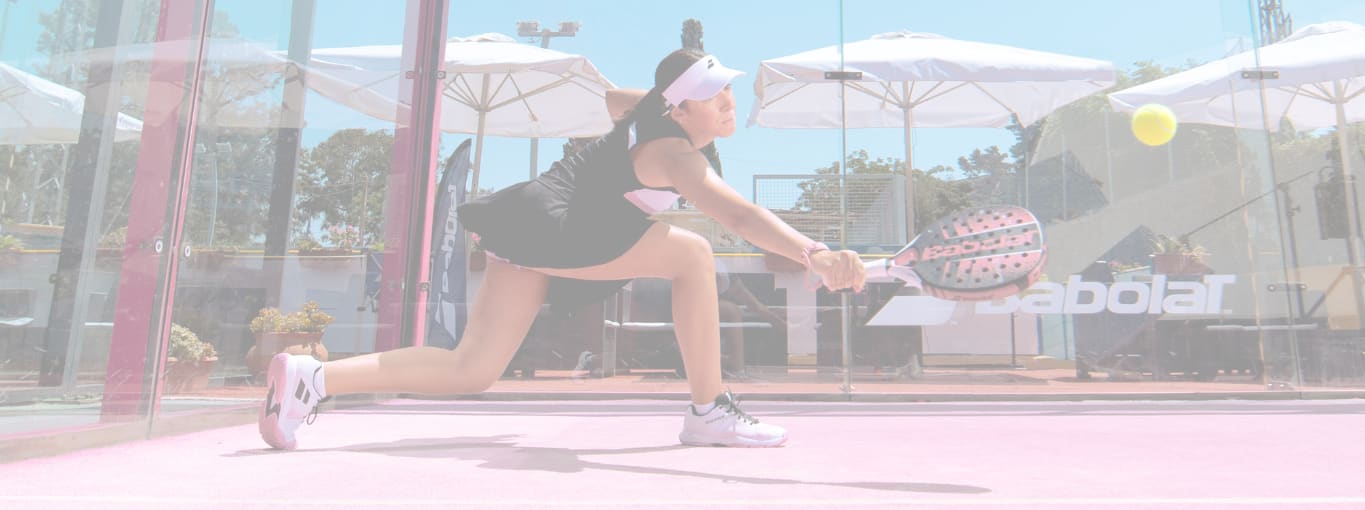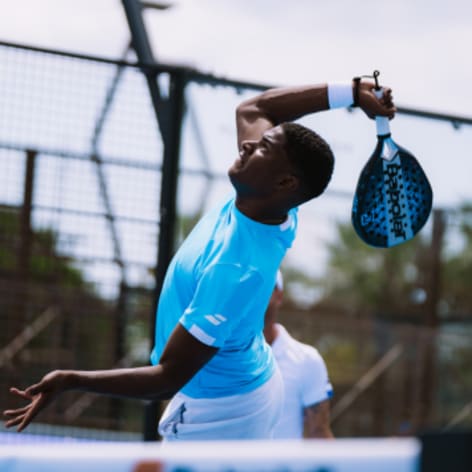Padel tactics rely on a clear understanding of the different zones of the court. Unlike what many intermediate players believe, progress does not depend solely on technique. The ability to quickly identify your position and adapt your shots often makes the difference between winning and losing a point.
The 3 zones of padel: understanding the court to make better decisions
Each area of the court imposes its own tactical constraints. This zone-based approach helps players at levels 3 to 5 structure their game and significantly reduce unforced errors. The goal is simple: link each position to a clear playing intention and use this knowledge to make better decisions.
The red zone: when caution is essential
The red zone is located at the back of the court, usually within 2 meters of the back glass. In this area, you are under pressure from your opponents, and your absolute priority is to stay in the rally. Balls often arrive after bouncing off the back wall, limiting your options.
In the red zone, prioritize high and deep shots. The lob becomes your best ally to buy time and reposition your team. Avoid attempting winning shots: a poorly executed strike from here usually gives your opponent an easy point. For defensive situations, round-shaped padel racquets provide more control and make it easier to reset the ball.
The orange zone: balancing risk and safety
The orange zone represents the middle of the court, between the service line and the back wall. It is a transition area where decisions are crucial. Here, you can either build the rally or try to take advantage depending on the ball’s height and speed.
In this intermediate zone, variety is key. A ball at waist height allows you to accelerate diagonally or down the middle. Low balls require more patience: opt for constructive shots directed at your opponents’ feet. Teardrop-shaped padel racquets combine control and power, making them ideal for adapting to the variety of situations in this position.
The green zone: exploiting attacking opportunities
The green zone extends from the net to about 3 meters back. This is the attacking territory, where every shot is a potential point. Volleys, bandejas, and smashes become your main weapons to capitalize on your dominant position.
At the net, systematically target your opponents’ feet or sharp angles. On high balls, diamond-shaped racquets generate more power for smashes aimed at the double glass or out-of-court exits by 3. However, placement is key: a poorly placed smash from the green zone can easily give your opponents a counterattack.

How to quickly identify your position in a match ?
Visual court markers
The court lines are your first reference points. The service line marks the boundary between the red and orange zones. The service box approximately indicates the start of the green area. However, these boundaries are not fixed: they shift depending on your opponents’ positions and the type of rally.
Also use the side glass walls as references. The closer you are to the wall, the more cautious you should play. At the center of the court, you have more strategic options.
The influence of ball height on your zone
The height of the incoming ball can instantly change your tactical sector. A high ball in the orange zone can be treated as a green-zone opportunity. Conversely, a low volley near the net requires the caution of an orange zone shot. This constant adaptability is what distinguishes good tactical players who know how to use each situation to their advantage.
Adapting shots to each zone: tactical guide
Red zone: defensive shots to prioritize
From the back of the court, your defensive arsenal mainly includes the deep lob, the high ball to the center, and slow cross-court shots. The goal is to neutralize your opponents’ pressure, not to win the point directly. Aim for maximum depth to push opponents back.
Orange zone: vary between building and pressuring
The middle area offers more freedom. On a comfortable ball, try fast shots at your opponents’ feet or sharp angles. On difficult balls, focus on maintaining the rally with high, deep trajectories.
Green zone: maximize the impact of your attacks
At the net, every shot should have a clear intention. Short cross-volleys, attacks to the middle (the “divorce” zone), and deep bandejas are your main options. On very high balls, the smash out by 3 or into the back glass can end the rally.

Common tactical mistakes of intermediate players
Attacking from the red zone: why it’s risky
The most common mistake is attempting winners from an unfavorable position. In the red zone, every attempt at acceleration exponentially increases the risk of unforced errors. Statistics show that 70% of lost points at this level come from poor decisions based on position.
Underusing the green zone at the net
Many players hesitate too much in a favorable position. At the net, passivity is costly, allowing opponents to regain the initiative. In the green zone, embrace your dominant position with decisive strikes.
Match application: winning strategies based on situations
Mastering the three zones transforms your approach to the game. Against aggressive opponents, exploit their impatience by keeping them in the red zone with lobs and deep shots. Against defensive players, patiently progress toward the green zone before accelerating.
Working with your partner also becomes smoother. Communicate about your respective positions: saying “I’m red” tells your partner to cover more space. This simple coordination significantly improves collective defense.
Mastering the 3 zones of padel marks a turning point in your progression. This structured approach reduces errors and optimizes decision-making. With practice, identifying positions will become instinctive, freeing your creativity for more advanced combinations.






